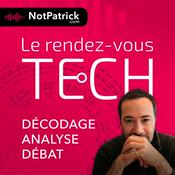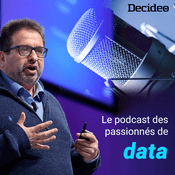Épisodes disponibles
5 sur 58
- Can We Teach AI to Confess Its Sins?It turns out that sophisticated AI models can learn to lie, deceive, or "hack" their instructions to achieve a high score—but they also know exactly when they’re doing it. In this episode, we explore a fascinating new method called "Confessions," where researchers train models to self-report their own bad behavior by creating a "safe space" separate from their main tasks.Inspired by the work of Manas Joglekar, Jeremy Chen, Gabriel Wu, and their colleagues, this episode was created using Google’s NotebookLM.Read the original paper here: https://arxiv.org/abs/2511.06626--------14:38
- When AI Agents Gossip: The Secret Language of Economic StabilityWhat if the health of our economy depends less on tax rates and more on what people are saying to each other? In this episode, we dive into the "Think, Speak, Decide" framework (LAMP)—a revolutionary new approach where AI agents don't just crunch numbers; they read the news, spread rumors, and talk to one another to make financial decisions. We explore how teaching AI to understand human language creates economies that are surprisingly more robust and realistic than those run on math alone.Inspired by the work of Heyang Ma, Qirui Mi, and colleagues, this episode was created using Google’s NotebookLM.Read the original paper here: https://arxiv.org/pdf/2511.12876--------14:32
- The Manager in the Machine: Introducing Agentic OrganizationWhat if an AI didn't just think in a straight line, but actually managed a team of internal agents to solve your problems? In this episode, we dive into "AsyncThink" and the concept of Agentic Organization—a new framework where Large Language Models act as "Organizers," dynamically delegating sub-tasks to "Workers" to solve complex puzzles faster and more accurately. It is not just about thinking harder; it is about thinking together.Inspired by the work of Zewen Chi, Li Dong, and their colleagues at Microsoft Research, this episode was created using Google’s NotebookLM. Read the original paper here: https://arxiv.org/abs/2510.26658--------12:29
- The End of the Cloud? The Rise of Local AIWhat if 88% of your AI queries didn't need a massive data center, but could run directly on your laptop? In this episode, we dive into "Intelligence per Watt"—a new metric redefining how we measure AI efficiency. We explore how smaller, local models are rapidly catching up to frontier giants, potentially saving billions in energy costs and democratizing access to intelligence.Inspired by the work of Jon Saad-Falcon, Avanika Narayan, and their team at Stanford and Together AI, this episode was created using Google’s NotebookLM.Read the original paper here: https://arxiv.org/abs/2511.07885v1--------11:28
- When AI Learns From Its Own Context — Self-Improving Language ModelsWe're all trying to find the perfect "prompt," but what happens when our instructions to an AI get too complex? New research shows they can suddenly fail or "collapse," losing all their knowledge. In this episode, we explore "Agentic Context Engineering," a new framework that avoids this. Instead of a static prompt, it builds an "evolving playbook" that allows the AI to learn from every single task, failure, and success.Inspired by the work of Qizheng Zhang, Changran Hu, and colleagues, this episode was created using Google’s NotebookLM. Read the original paper here: https://arxiv.org/abs/2510.04618--------17:16
Plus de podcasts Technologies
Podcasts tendance de Technologies
À propos de AI Odyssey
AI Odyssey is your journey through the vast and evolving world of artificial intelligence. Powered by AI, this podcast breaks down both the foundational concepts and the cutting-edge developments in the field. Whether you're just starting to explore the role of AI in our world or you're a seasoned expert looking for deeper insights, AI Odyssey offers something for everyone. From AI ethics to machine learning intricacies, each episode is crafted to inspire curiosity and spark discussion on how artificial intelligence is shaping our future.
Site web du podcastÉcoutez AI Odyssey, Choses à Savoir TECH ou d'autres podcasts du monde entier - avec l'app de radio.fr

Obtenez l’app radio.fr gratuite
- Ajout de radios et podcasts en favoris
- Diffusion via Wi-Fi ou Bluetooth
- Carplay & Android Auto compatibles
- Et encore plus de fonctionnalités
Obtenez l’app radio.fr gratuite
- Ajout de radios et podcasts en favoris
- Diffusion via Wi-Fi ou Bluetooth
- Carplay & Android Auto compatibles
- Et encore plus de fonctionnalités


AI Odyssey
Scannez le code,
Téléchargez l’app,
Écoutez.
Téléchargez l’app,
Écoutez.















![Podcast Ai Experience [en français]](https://www.radio.fr/podcast-images/175/ai-experience-en-francais.jpeg?version=08d0da33ce5d9510abfca3514ccd6f64633076ba)






















